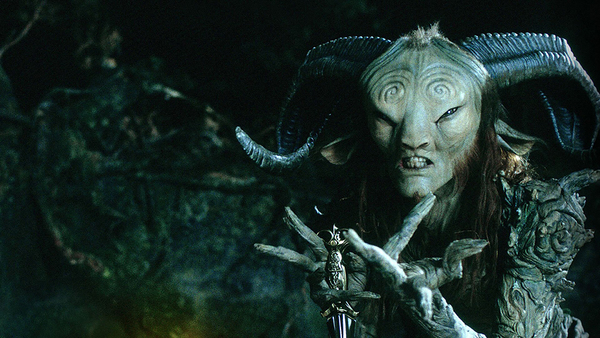GUILLERMO DEL TORO
The Genius from Guadalajara
POSTED ON OCTOBER 15, 2017
Guest of honor at the Lumière festival, the Mexican filmmaker merits (re)discovery during a special all-nighter at the Institut Lumière, featuring four of his films in a row. His enticing Carte Blanche program will follow, then a Master Class not to missed under any circumstances and a premiere of his much-buzzed-about new film. Between intimate fantastic movies and more traditional blockbusters, a visit to the universe of a Hollywood auteur.

When Alfonso Cuarón meets Guillermo del Toro on the set of the Mexican series La Hora Marcada, the "genius from Guadalajara" is already a catchphrase. In 1993, Cronos marks the beginning of his success, garnering a selection at the Cannes Film Festival. The supernatural tale with reinvented vampirism sets the tone of the del Toro style, imbued with an intense imagination drawn from his tender youth, populated by monsters, sci-fi symbolism and baroque creatures. Against the backdrop of the Spanish Civil War and the Franco aesthetic, The Devil’s Backbone (2001) and Pan’s Labyrinth (2006) also explore childhood defense mechanisms against the supernatural and horror. Pan's Labyrinth is crowned with three Oscars: Best Photography, Best Makeup and Best Artistic Direction. And the wonderful interpretation of little Ofelia (Ivana Baquero) is rewarded with a Goya. The formidable performance of Sergi López as a fascist and detestable captain remains ingrained in our brains as well.
In true genius mode, the filmmaker is teeming with projects. In 2002, and a few months apart from The Devil's Backbone, he releases the bracing and bloody Blade II (2002), an uninhibited blockbuster played with brio by Wesley Snipes as an icy man-vampire creature. He directs the Hellboy hit in 2004, an impactful transposition of the comic hero to the big screen. Its sequel, Hellboy II, The Golden Army (2008), is more personal and follows more closely the original parable. The director entrusts the role once again to the brilliant Ron Perlman, who gives life to this hemoglobin-hued demon jester, a rogue beer drinker and cigar lover. In Pacific Rim, a big odyssey of the summer of 2013, Guillermo del Toro directs his go-to actor for the fifth time: the genetically mutated monsters (Kaiju) and the giant robots (Jaeger) engage in titanic battles in the pure tradition of Japanese science fiction films like Godzilla. Once again, Guillermo del Toro breathes extra soul (and humor) into his big budget films. In 2015, he changes registers with the gothic horror romance, Crimson Peak, which leads Stephen King, master of the genre, to describe as superb and "totally terrifying.” Guillermo del Toro continues his "crusade against cynicism": "We live in a strange world where hatred and cynicism are seen as signs of intelligence; if you talk about feelings, you look like an idiot. Emotion is the antidote, it's the new punk," he recently declared at the Sitges Film Festival.
Along with Alfonso Cuarón (another special guest and friend of the festival) and Alejandro Iñarritu - Guillermo del Toro is part of a new generation of world-class Mexican filmmakers who have worked in solidarity with respect to their native land. Guillermo del Toro may have made a career for himself in English or in Spanish, but we can bet that the soul of his pious grandmother from Guadalajara is instrumental to his successes. His latest film, The Shape of Water, presented as a French premiere at the Lumière festival, is a sentimental and political tale for a happy few he wanted to be sufficiently strange and with self-control, in the image of his character. His first adult film.
Charlotte Pavard

